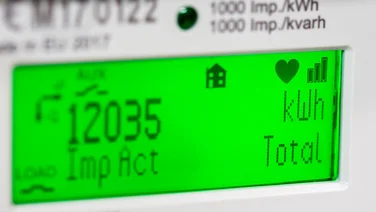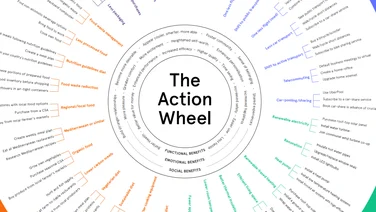- AI can analyze vast data sets and provide actionable insights. It is therefore increasingly being recognized as a powerful tool in the fight against climate change.
- From improving natural disaster forecasts to optimizing energy usage, AI has the potential to enhance our response to environmental challenges greatly.
- However, while AI presents significant opportunities, its implementation must be carefully managed to mitigate the environmental impact, such as energy consumption.

Credit: Maher Najm/FlickrWhether you are concerned about climate change or not, what is clear is that technology (like many issues throughout history) can and will be tackled using technology.
From developing new ways to create energy (nuclear fusion, solar energy, etc.) to improving ways to conserve energy, technology has helped greatly reduce our reliance on fossil fuels.
One of the latest new technologies is artificial intelligence (AI). Already integrated into many products you use, it has already borne fruit when finding ways to do tasks faster and more efficiently.
This begs the question of whether AI can be used to combat climate change. Let’s take a look.
What is AI?
Before we get into the details, it might be worth explaining what AI is.
At its core, AI refers to highly advanced software systems trained on vast amounts of data to perform tasks that typically require human intelligence. It’s an umbrella term that includes other technologies you may have heard of, such as machine learning (ML).
AI applications are wide-ranging, from generating images and composing music to writing text, translating languages, making recommendations, and much more—all at speeds far beyond human capability.
If you’ve ever used a search engine or a smart device, you’ve likely already interacted with some form of AI.
AI systems can be designed to handle general tasks or specialized ones, such as chatbots for customer support or AI tools monitoring and optimizing processes like production lines.
But this short overview only really scratches the surface of this diverse and incredibly powerful technology. One area where it might be able to make a huge difference is with climate change.

Credit: GTS AI DATA/Flickr
How can AI stop climate change?
One of AI’s outstanding abilities is examining enormous data sets to help find patterns or insights.
This is the realm of data science and it will prove incredibly powerful regarding climate change, especially for something as complex as the Earth’s systems (like climate). Climate scientists need to negotiate large amounts of data every day.
To this end, AI could help us tackle climate change in many interesting and exotic ways. Here are but a few:
- Improving hazard forecasting – Advanced technologies like machine learning and satellite imagery allow for more accurate predictions of natural disasters. This enhances early warning systems, helping to mitigate loss of life and property by allowing timely evacuations and preparedness measures.
- Tracking pollution – Data from IoT sensors and satellite systems can now track air and water pollution in real-time. This granular monitoring helps policymakers enforce environmental regulations and quickly respond to hazardous levels of pollutants.
- Resource management – AI and data analytics are transforming how we manage natural resources such as water, energy, and land. Smart systems can monitor usage patterns and optimize allocation, ensuring sustainable resource use and reducing waste.
- Monitoring climate treaties – Satellites and big data analysis allow for precise tracking of carbon emissions and deforestation activities. These tools provide global oversight, helping to ensure countries adhere to international climate agreements.
- Improving energy efficiencies in smart homes — Connected devices and smart meters in homes can now automatically adjust energy usage based on real-time data. Optimizing electricity use not only lowers homeowners’ costs but also reduces their overall carbon footprint.
- Identifying and monitoring food insecurity risk – Remote sensing and AI-driven analytics can help identify at-risk areas by analyzing crop health, soil conditions, and weather patterns. This enables governments and NGOs to intervene early to prevent food shortages and improve resilience.
Despite all the ways in which AI could be beneficial, only 13% of people believe AI has great potential to address climate change, according to our 2024 National Home Energy Survey.
On the other hand, 22% of people are unsure about the role of AI, with Boomers leading the charge on skepticism. Millennials are the most optimistic generation with 19% believing AI can help.
To learn more about public opinion on AI and climate change, along with people’s views on green technology and government incentives, download the NHES.
National Home Energy Survey 2024
Read the full findings from this year’s report by downloading the PDF here
Are there any examples of AI being used to fight climate change?
We’ve already touched on a few examples above, but AI is already being employed to help tackle some aspects of climate change.
For example, AI is being employed to help predict weather patterns in Africa, helping local communities better prepare. This helps them rally themselves to access clean water, improve waste management, and even conduct reforestation programs.
IBM and NASA have also teamed up to use AI to help build better weather and climate forecasting models. “The goal is to improve the speed, accuracy, and accessibility of weather forecasting and other climate applications,” IBM explains.
Another “The Ocean Cleanup” project uses AI to help clean up the ocean. AI programs can produce detailed maps of ocean litter in locations and intelligently and more efficiently target it for collection than manual aerial monitoring and planning.
Yet another is using AI to recommend new tools to fight climate change. Spearheaded by Google DeepMind, AI has already been used to create a wish list of datasets to help advance our understanding of the core issues. Others include better weather forecasting and improved wind turbine efficiency.
AI can also help reforest areas like Brazil. In a new initiative, AI is paired with drones to target areas for better seeding. Some drones can deploy 180 seed capsules a minute, which is 100x faster than human volunteers.
Can AI help solar energy?
AI has tremendous potential to help with the world’s shift towards clean energy, in particular solar power, where it can help overcome certain challenges, such as the reliance on the weather.
Solar energy supply is vulnerable to extreme, and more common, weather events, such as heatwaves and sandstorms. Added to that are constraints on national grid systems, which make large-scale roll out difficult.
However, according to the World Economic Forum (WEF), AI’s ability to analyse weather data can be used to maximise solar output and improve grid management.
As well as that, cloud-imagining technology that collects accurate information on cloud movement and conditions.
This in turn would allow operators of large-scale solar projects to forecast precise solar power patterns and plan for extreme weather conditions and the resulting interruption of energy supply.
There are number of other ways AI can help with the implementation of solar power:
- Predictive maintenance – AI can be used to continuously monitor solar panels, especially on solar farms, including temperatures, tilt angles, dirt, power output and anything else that may affect output.
- Data reporting – Chat interfaces allow for faster and more efficient, breaking down complex technical information on system health and energy output for domestic solar panel consumers.
- Energy trading – When integrated with battery storage systems, AI can make it much easier to track energy demands and market conditions, making it easier for traders to manage oversupply and demand.
What are the problems with AI?
As potent as AI will undoubtedly become when it comes to addressing challenges with climate change, it is not without its inherent issues. These include but are not limited to:-
- Power consumption and emissions—AI needs energy-hungry computers to run. Computers need power. With the escalating use of AI, more computers will need power, and carbon emissions will rise if not powered by renewable or low-carbon technology.
- Data centre water use – Computers, especially large numbers in data centres, also require a lot of cooling. This is typically done using a combination of water cooling and air conditioning.
- Land use – Sticking with data centres, these are typically large facilities that need considerable land to site.
- Not foolproof – As great as AI is at data analysis and prediction, it typically relies on historical data to make predictions or recommendations. While the same applies to human climate change policymakers, AI (like us) can never see into the future.
- AI can hallucinate – Another problem with AI (especially LLMs) is their worrying propensity to hallucinate and provide false results. For this reason, overreliance on this technology could be dangerous if it is not sense-checked by human experts.

Credit: Eric Kilby/Flickr
Summary
- Technology has always been crucial in addressing humanity’s major challenges, and climate change is no different.
- From nuclear fusion to smart energy management, innovations continue to reduce our dependence on fossil fuels.
- Artificial intelligence (AI) is one of today’s most transformative technologies, already optimizing numerous processes across industries.
- The potential of AI to combat climate change is promising, especially in areas like forecasting, resource management, and energy efficiency.
- While AI offers significant benefits, the environmental costs associated with its energy use and infrastructure must be acknowledged.
- As AI evolves, its role in climate action will likely expand, but human oversight will remain essential to ensure its success and reliability.







